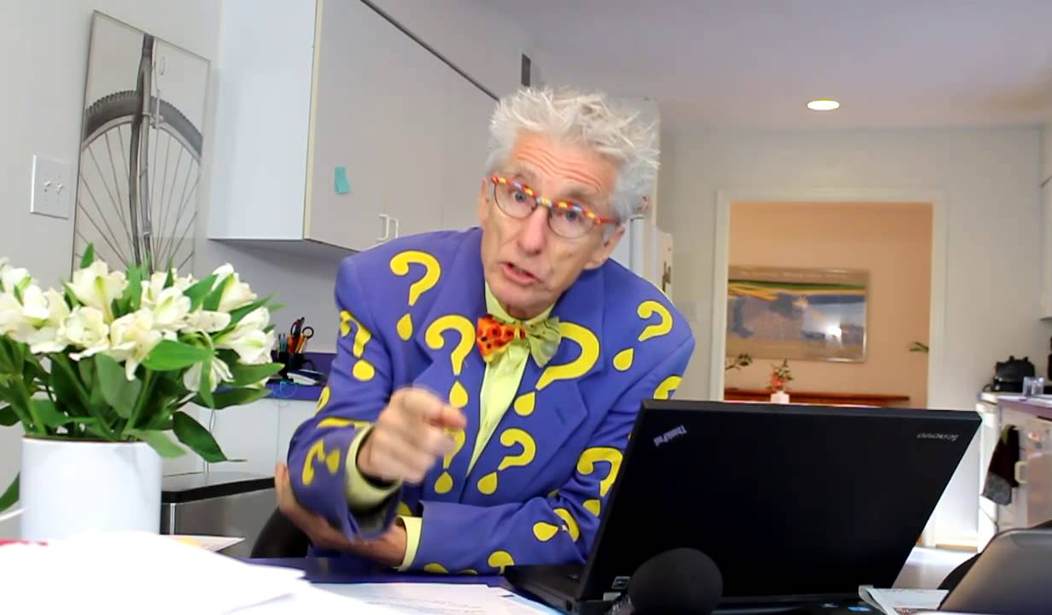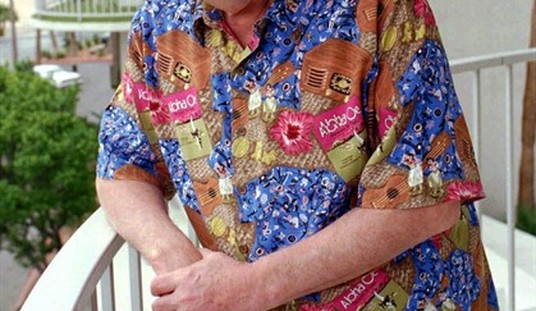“Anything free is worth what you pay for it.” — Robert Heinlein
Remember Matthew Lesko, the “Free Money Guy” from those late-night TV infomercials? He’s still around on the web, currently promising, for a small monthly membership fee, “free” help in filling out government aid applications. With Lesko’s aid, you can apply for free money to pay for everything from $600 in car repairs, to $25,000 for a new kitchen, to presidential birthday cards. Why anyone needs help with that last item is beyond me, but Lesko has been at this for a very long time so I’m assuming he must have some happy customers somewhere. Although I have yet to spot one in the wild.
Lesko, however, has nothing on “moderate” Democratic Ohio Congresscritter Tim Ryan and progressive Democratic Congresscritter Ro Khanna. On Tuesday, along with 17 other Democrat cosponsors, Khanna and Ryan introduced the Emergency Money for the People Act which would transfer $2,000 a month to every American over the age of 16 who makes less than $130,000 a year. Qualifying families with kids 16 and under would receive an additional $500 per child. For a not-untypical family like mine, that comes out to a stipend of $60,000 a year — even though my wife and I are still working full-time at our pre-coronavirus jobs. The program would last for six months or until the unemployment rate returns to the pre-plague rate of 3.5%, whichever comes second.
Bear with me here while I take you through some back-of-the-envelope math to figure out how much all this Emergency Money is going to cost.
There are approximately 70 million kids in the U.S. ages 16 and under, and I’m going to assume that not enough of them make more than $130,000 to matter for our simplified math. (Yes, I’m being cheeky.) Five hundred dollars a month for six months (minimum) to each of them is $210 billion dollars or more than a quarter of our annual defense budget.
Out of approximately 250 million adult Americans, only about 21 million of them make more than $100,000 per year. It’s impossible to say how many of them are below the $130,000 cutoff, so to keep things simple let’s knock a million people off the total for a nice, round 20 million. So we have about 230 million adults getting $2,000 a month for the same six months (minimum), plus those 70 million kids, which adds up to…
Did you already run the total in your head? If not, brace yourself.
$3,000,000,000,000

Even Dr. Evil is impressed, and he spent six years attending Evil Medical School.
I’m not sure if the Emergency Money would be in addition to unemployment benefits or added on top, but seriously, any and everything over $3 trillion-with-a-T looks like a rounding error.
I have a couple of questions.
• What the hell are we going to spend it on if we aren’t going back to work, producing things?
• “Transfer” the money — from where?
The first question is the important one because Emergency Money only addresses the symptoms of our economic troubles rather than the cause.
Small businesses are failing left and right or soon will be, driving up unemployment but more importantly, reducing opportunities for future job gains once the crisis has passed. If we want the economy to rebound as quickly as possible, Khanna is correct when she says that “A one-time, $1,200 check isn’t going to cut it.” What the economy needs, and what I proposed almost two weeks ago, is a debt moratorium [VIP link] for the duration of the Wuhan-virus crisis. While I certainly wouldn’t mind an extra $2k a month, if my local ramen place closes down* because they can’t pay the rent or the lease on their kitchen equipment, then it doesn’t matter how much Emergency Money I have to spend.
When the Wuhan virus struck, it wasn’t like the 2007-08 financial panic, which suppressed consumer demand primarily through foreclosures and a radical reduction in household wealth. What Wuhan did was force governments to disrupt production via closures and stay-at-home orders. The key to recovery is making sure that there are as few business bankruptcies as is humanly possible so that when Americans are allowed to go back to work, there are still jobs to go back to. Three trillion dollars in cash we can’t spend doesn’t address the root issue.
Yes, we should pay people back for forcing them out of work. Stay-at-home orders are clearly a government “taking,” which under the 5th Amendment requires “just compensation” from Washington. But a “temporary” and universal $3 trillion stipend is, I fear, less of a way to get America through the crisis, and more of an underhanded way for Progressives to sell America on a permanent and universal basic income.
The answer to the second question is simple: The money either comes from our kids, grandkids, great-grandkids, great-great-grandkids ad infinitum, or it comes out of our savings and future spending power via inflation. Or a combination of both.
Years ago, the New York State Consumer Protection Board looked into Lesko’s promises of “Free Money to Pay Your Bills,” and found them wanting, to say the least. They said his ads were “peppered with exaggerations and half-truths” about a supposed $350 billion-dollar-a-year windfall Americans were entitled to but were somehow missing out on without Lesko’s books or $20-a-month web services. The Emergency Money for the People Act is something similar: “Free” money that won’t accomplish what it promises, and is anything but free.
*Ramenchops is still open, thank goodness, and I know what I’m doing for lunch today.
Editor’s Note: Want to support PJ Media so we can keep telling the truth about China and the virus they unleashed on the world? Join PJ Media VIP and use the promo code WUHAN to get 25% off VIP membership!










Join the conversation as a VIP Member